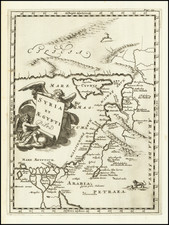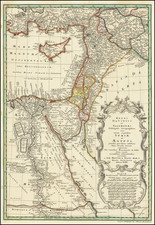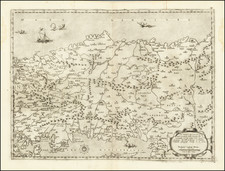The British War Office map of Nicosia and its environs, compiled in 1963 by the 42 Survey Engineer Regiment, provides a fascinating snapshot of the city's geography and built environment at the time. Constructed using aerial photographs from 1962 and information provided by the Government of the Republic of Cyprus, the map offers a clear and accurate representation of Nicosia with a scale of 7.92 inches to 1 mile.
A network of through routes, minor roads, and tracks, criss-cross the map, providing the primary means of traversing the city and its environs. These routes are marked with different symbols, distinguishing highways with bridges, less travelled roads, and footpaths, each winding their way through the city and beyond.
The map also delineates numerous important public buildings, displayed in stark black ink to differentiate them from the sea of grey representing other structures. It pinpoints the location of the British Embassy, a vestige of the city's colonial past. Government buildings, including administrative offices, are marked, indicating the centres of the city's governance. The postal system is accounted for, with post offices dispersed throughout the city, crucial in connecting Nicosia with the rest of the country and indeed, the world.
Medical facilities such as hospitals are noted, as are cultural establishments including museums. Religious institutions - the cathedral and mosques, stand as symbols of the city's religious diversity. The educational infrastructure is represented by schools dotting the map, the banks indicate the thriving financial sector, while the theatres, hotels, and fire stations mark out the city's social, hospitality, and safety networks.
The natural environment, too, is captured in the map. Rivers and "other water courses" are noted, delineating the city's waterways. Types of vegetation, including palm trees, orchards, vineyards, and other trees, add another layer of detail to the representation, providing insight into the natural and agricultural wealth of the region.
In this map, the east, northeast, and southeast of Nicosia and its surroundings are rendered in minute detail. It was designed not merely as a navigational tool, but as a comprehensive military overview of the city, its infrastructure, and its natural environment during a critical period in Cypriot history. The map thus serves as a window into the past, providing rich insights into the physical landscape of Nicosia and its environs in the early 1960s. It stands as a testament to the complex and detailed work undertaken by the British War Department in their cartographic efforts.
Post WWII Cyprus and the End of British Colonial Rule
Following the end of World War II, Cyprus experienced a significant series of events that shifted its political, social, and economic landscape. Being a British colony since 1878, the post-war period was marked by an intensified struggle for self-determination and independence.
In the immediate post-war years, the island was largely peaceful, but there were stirrings of nationalist sentiment among the Greek Cypriot population who formed the majority. The EOKA (National Organisation of Cypriot Fighters) movement, led by General George Grivas, emerged in the 1950s, campaigning for enosis, the union of Cyprus with Greece. Simultaneously, the Turkish Cypriot community, fearing marginalization in a Greek-dominated Cyprus, favored partition, hoping to divide the island into Greek and Turkish sectors.
Britain, during the 1950s, found itself grappling with several issues on the island. The Suez Crisis in 1956 in particular strained the British administration's resources, causing a shift in the perception of its overseas possessions. Facing mounting pressure from the Cypriots, as well as international forces, the British Government initiated talks for the independence of Cyprus.
In 1959, the Zurich and London Agreements were signed, laying the groundwork for an independent Republic of Cyprus. Independence was finally granted on August 16, 1960. The agreements ensured a balance of power between the Greek and Turkish Cypriot communities, with Britain, Greece, and Turkey as guarantor powers. Archbishop Makarios III, a prominent figure in the fight for independence, became the first President, with Turkish Cypriot Fazil Küçük as Vice President.
In the wake of independence, Cyprus faced significant challenges. Inter-communal violence between Greek and Turkish Cypriots broke out in 1963, leading to a division of the capital, Nicosia, into Greek and Turkish sectors. Britain played an important role during this period, contributing to the formation of a United Nations peacekeeping force to restore order on the island.
Despite ongoing tension and conflict, the 1960s also marked a period of economic growth for Cyprus, with increases in tourism, mining, and agriculture. However, the lingering ethnic tensions and division cast a long shadow over the island, setting the stage for the turbulent 1970s.











![[ Cyprus, Syria, Palestine, etc. ]](https://storage.googleapis.com/raremaps/img/small/103027.jpg)


![[ Paradise ] De Gelegentheyt van t'Paradys ende t'Landt Canaan, Mitsgaders de Eerst Bewoonde Landen Der Patriarchen uyt de H. Schrifture en verscheyden Auctoren by een gestelt door Nicolaes Visscher](https://storage.googleapis.com/raremaps/img/small/85711.jpg)

![[Holy Land, Cyprus, Syria & Middle East] Asiae IIII Tab](https://storage.googleapis.com/raremaps/img/small/96376.jpg)